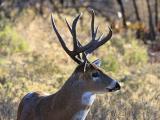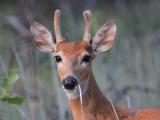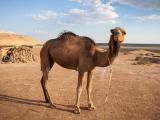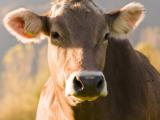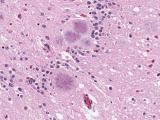Jan 10, 2005 (CIDRAP News) Investigators of Canada's second case of bovine spongiform encephalopathy (BSE) have determined that 38 cattle might have been exposed to the same feed as the infected cow and that one of those was exported to the United States.
Canadian officials announced Jan 2 that BSE, or mad cow disease, had been confirmed in an older dairy cow. The cow came from a farm near Barrhead, Alta., northwest of Edmonton, according to an Edmonton Journal report last week.
The Canadian Food Inspection Agency (CFIA) announced Jan 7 that the infected cow's birth cohortcattle born on the same farm and within 12 months before or after its birth in 1996included 38 other cattle of "primary interest." To prevent the spread of BSE, Canada and the United States both banned the feeding of ruminant animal remains to ruminants (cud-chewing animals) in 1997.
"It is possible that these animals could have been exposed to the same feed as the infected animal," the CFIA said.
Cattle are believed to contract BSE by eating protein from infected cattle. Consuming meat products from infected cattle is thought to be the cause of variant Creutzfeldt-Jakob disease (vCJD) in humans.
Dr. Ron DeHaven of the US Department of Agriculture (USDA) said Jan 7 that one animal from the infected cow's birth cohort was imported into the United States in February 2002 for immediate slaughter. DeHaven, head of the Animal and Plant Health Inspection Service, said USDA and the Food and Drug Administration would trace what happened to the animal.
DeHaven and the CFIA said the risk of finding another BSE case from the infected cow's birth herd is very small. "Finding multiple cases of BSE in a single birth cohort is rare, based on international experiences," the CFIA said. DeHaven called it "extremely unlikely" that the imported animal would have had BSE.
Despite the low risk, DeHaven said the USDA would "make every reasonable effort" to trace the imported animal and any others from the same birth group, as the agency did after Canada's first BSE case was discovered in May 2003 and some cows from the herd of origin were traced to the United States.
The CFIA said that 9 of the 38 cattle in the birth cohort have been found and quarantined and that euthanization would begin this week. Another animal from the group previously tested negative for BSE after it was reported as a downer. The agency said it was trying to find the rest of the cattle and determine their status.
The infected cow gave birth in 2003 and 2004, but both calves died of causes unrelated to BSE, the CFIA reported.
Canadian news reports quoted the CFIA as saying that the infected cow's birth herd also included 55 bull calves, which would have been slaughtered very young.
In related news, a report from Canada's CanWest News Service last week said some cattle feed samples tested by the CFIA early in 2004 might have contained ruminant animal remains, in violation of the ruminant-to-ruminant feed ban.
The report quoted Sergio Tolusso of the CFIA as saying that 66 of 110 feed samples were found to contain animal material, though they were sold as being free of such material. Officials subsequently inspected some feed mills and concluded that feed from four of them might have contained material from ruminants, Tolusso was quoted as saying.
The four mills implicated in the study took voluntary steps to reduce the risk of violating the feed ban, Tolusso said. They did not recall any feed products, because the protein material was not positively determined to be from cattle.
About half of the 110 feed samples were from imported feed products and the rest came from Canadian mills, the story said.
The report noted that ruminant remains can still be fed to nonruminants such as chickens and pigs, and chicken and pig materials can be fed to ruminants.
But Tolusso said there was little risk that the ruminant materials in the cattle feeds contained the BSE agent because the incidence of BSE in Canadian cattle is low.
